Pan Trip

Beez Neez now Chy Whella
Big Bear and Pepe Millard
Mon 2 Nov 2009 20:30
|
A Pan Visit - with a
difference - The Personal Touch
 We went on another short notice trip
with Jessie. This time it was Monday morning, jobs planned and he radioed to say
he had a group of six going on a pan visit followed by Angostura, mention a
sampling of Rum products to Bear and he was in the shower before I could say
"shall we go". Clean and tidy we were ready for the off at 09:30. We drove to
the left of Port of Spain to Petit Valley, pulled off the road, down a steep
slope, behind a field full of "one careful
owners".
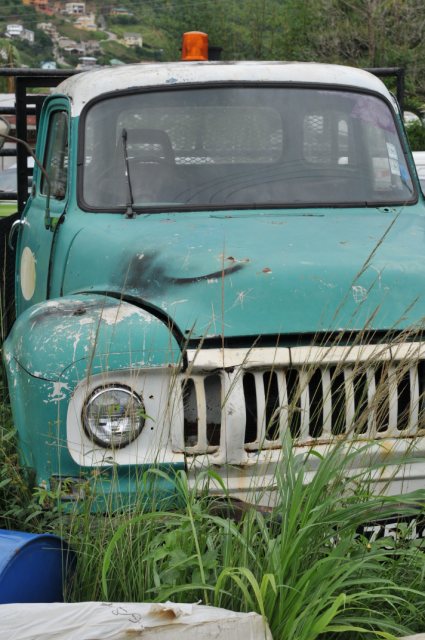   Some of the "one
careful owners" and some of the debris from pan drum
manufacture
   Jessie of
course had many calls on his mobile. Then we saw the actual supply of 'raw drums'
 Our host Tony, who said he was "in his late fifties". He has been
playing, tuning and making pans since early boyhood.
   Whist Tony was getting his bits and
bobs ready to show us - Jessie told us all he knew -
plenty of size involved.
 This is the new
factory being built just down the road. When it is finished it will have
gas ovens to heat the pans. Nowadays oil drums are tempered steel with many
inclusions, they have to heated and chromed to prevent rust and keep the
instrument in perfect condition and tuned for up to ten years. Drums must be
kept in a padded bag, away from extremes of temperature. Funny when we watched
some of the big bands at Emancipation, as they were finished the drums
were hauled into the back of a flat bed truck, we guess they have full time
tuners?
Jessie had told us a little of the
various classes of band. A small conventional - meaning the single drum is seen
hanging around the neck - is made up of 15 - 20 pans. Small conventional - on
stands - 20 to 40. Medium 40 - 80. Large ( the bands we love to see ) 80 to 120.
These big bands have the biggest available cash winnings in competitions. Judges
count the numbers of pannists and strictly observe the minimums or a band may
have to drop a class due to sickness or people not showing up, so it pays to
have 'spares' around on the day.
Most pannists play by ear or
repetition of learning. Jessie says a couple of months before Carnival he takes
trips to the practices. Groups of tenors in one corner, groups of bass etc. They
produce an awful noise, but as carnival approaches each set of pannists have
memorised what notes, in comes the conductor and it's all brought together. Some
bands as previously mentioned have played together for years and play a huge
number of tunes from memory.
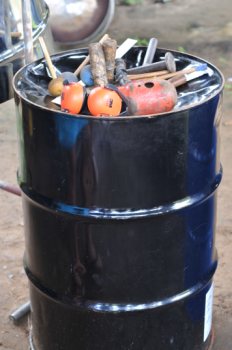 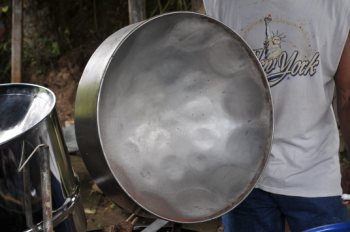 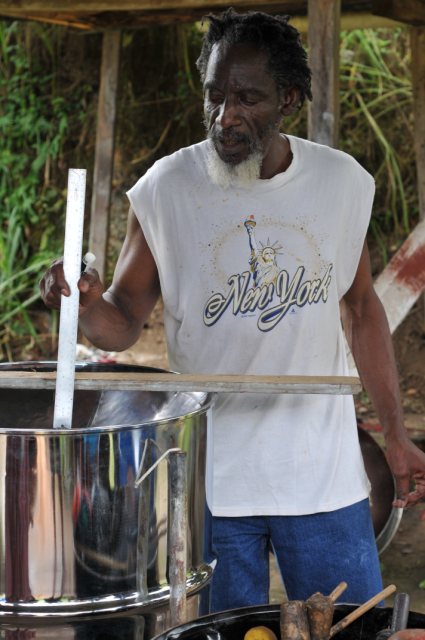 The full tool
kit, notice some of the hammer tops came from the big
gas cylinders. A ready to tune pan, this has a full octave tuned to a piano. In the old days all
notes were tuned to an old recorder before any pianos came to
Trinidad. Tony showing how he measures
the depth. I did a full history of the pan drum
on a blog called Steel Bands back on the 20th of March so will not go through it
all again. The difference here was being able to see an oil drum go through the
stages of hand production to finished, highly chrome polished drum costing
around £500.
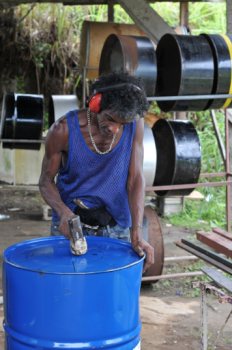 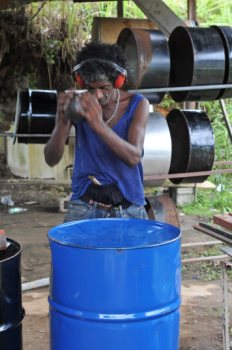 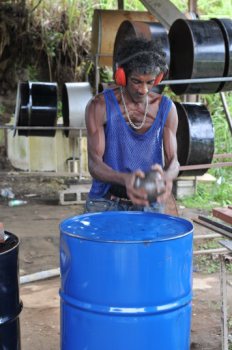 One of the famous Phase II pannists happens to work with Tony, we have seen
him several times, not an ounce of fat on him, now we know why. He showed us how
you can use an ordinary hammer to stretch the oil drum. Then he picked up the
"canon ball" known as a 'stone'. He skillfully let it drop, caught it and
dropped over and over, completing a full circle of indentations. The noise was
awesome. Once the desired depth is achieved - depending on the type of pan being
made - the hammer is used to smooth out the humps and bumps. Next job is to use
a marker pen and draw a spiders web which forms the basis of note
formation.
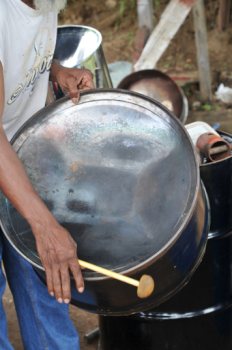 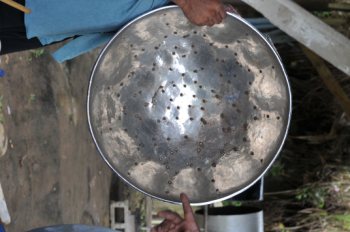  A bass with five notes - stretched to
a depth of four inches. You can also buy a bass with three notes - usually C, C
and G. A bore drum - any drum with strategically
placed holes, making it much louder - used in outdoor concerts. A nearly
finished tenor drum, stretched to
a depth of seven and a half inches to eight, maximum nine inches - any deeper
the drum would surely tear. Each note nowadays is separated by a half inch gap
and a sharp point is used to mark the edges, skillfully hammered by
eye.
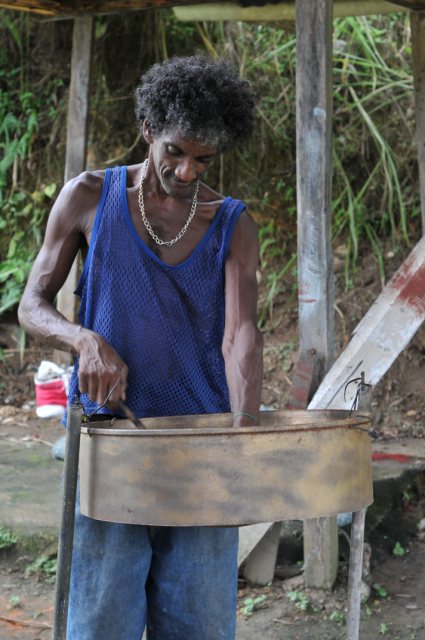 Cigarette end thrown, stood on a piece
of broken breeze block, foot tapping the beat, sticks taken from the top of his
shorts, "do you know Misty" and proceeded to play the
most magical private concert ever.
ALL IN ALL RUSTIC, RAW AND
BEAUTIFUL
|